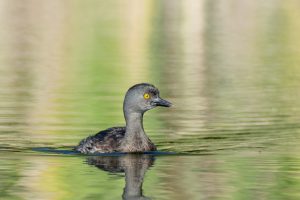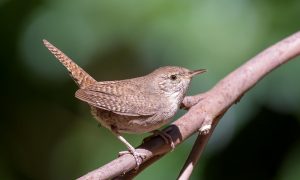Sparrows that Live in Texas & What They Look Like
Texas officially has 38 sparrow species documented in the state. There are 37 native sparrow species (which includes 4 towhee species), plus the non-native House Sparrow.
House Sparrows are usually the most common sparrow at bird feeders, often feeding in groups of 3 to 20+.
Common Texas Sparrows include:
- House Sparrow
- Chipping Sparrow
- Field Sparrow
- White-crowned Sparrow
- White-throated Sparrow
- Song Sparrow
- Savannah Sparrow
- Vesper Sparrow
- Lincoln’s Sparrow
- Dark-eyed Junco
- Spotted Towhee
Uncommon, rare, or range-restricted sparrows:
- Eastern Towhee
- Canyon Towhee
- Green-tailed Towhee
- Lark Sparrow
- Grasshopper Sparrow
- Swamp Sparrow
- Fox Sparrow
- Lark Bunting
- Cassin’s Sparrow
- Clay-colored Sparrow
- Harris’s Sparrow
- American Tree Sparrow
- LeConte’s Sparrow
- Henslow’s Sparrow
- Bachman’s Sparrow
- Nelson’s Sparrow
- Seaside Sparrow
- Black-throated Sparrow
- Rufous-crowned Sparrow
- Black-chinned Sparrow
- Baird’s Sparrow
- Brewer’s Sparrow
- Sagebrush Sparrow
- Olive Sparrow
- Botteri’s Sparrow
- Golden-crowned Sparrow
- Yellow-eyed Junco
House Sparrow
- Common in urban & suburban areas
- Often seen at bird feeders
- Always in groups

The House Sparrow is the most commonly observed sparrow because they’re so adapted to cities and suburban neighborhoods.
Also called the English Sparrow, these little brown birds are originally from Europe. As a non-native and invasive species in Texas, they’re typically bad news for local birds like cardinals, bluebirds, and woodpeckers.
As dietary generalists, they’re not picky about what they eat and are highly effective at finding food. They also love bird feeders, and will often swarm them to the point of pushing other birds away.
House Sparrows are aggressive for their size, and will fight off bigger birds at food sources like backyard feeders and bird baths. They will take over nesting cavities of other birds, which harm cavity nesters like wrens, bluebirds, woodpeckers, and Purple Martins.
Chipping Sparrow
- Rufous head cap, black eye line, clean unmarked breast
- Often in groups on the ground
- Common during winter months
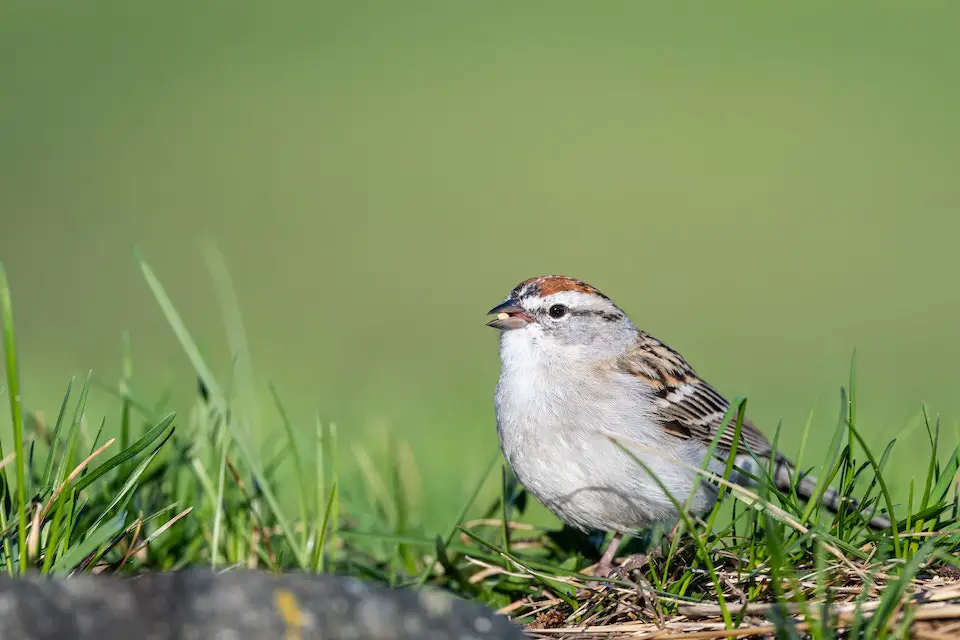
Chipping Sparrows breed throughout most of Texas, can be found in the Panhandle during spring and fall migration, and are winter residents in the southern half of Texas.
Chipping Sparrows are most often seen feeding on the ground, singing from tree branches, and taking cover in low bushes. Their habitat is forests, open woodlands, shrubby backyards, and nearby grass clearings.
Similar species include Field Sparrow.
Field Sparrow
- White eye ring, clean unmarked breast
- Year-round and migratory

Photo credit: Kelly Colgan Azar
Field Sparrows occur from Edward’s Plateau through north-eastern Texas year round. They are winter birds throughout most other regions of the state.
Field Sparrows are primarily grassland birds, and can be found on or near the ground in agricultural fields, road and forest edges, and open patches in woodlands. These sparrows tend to avoid backyards and suburbs.
Field Sparrows have a distinctive bouncing-ball song. It starts slow and speeds up as it goes, like the sound of a golf ball being dropped straight down on a hard surface.
Similar species include Chipping Sparrow.
White-crowned Sparrow
- Bold black and white stripes across head
- Winter species in Texas (October – April)
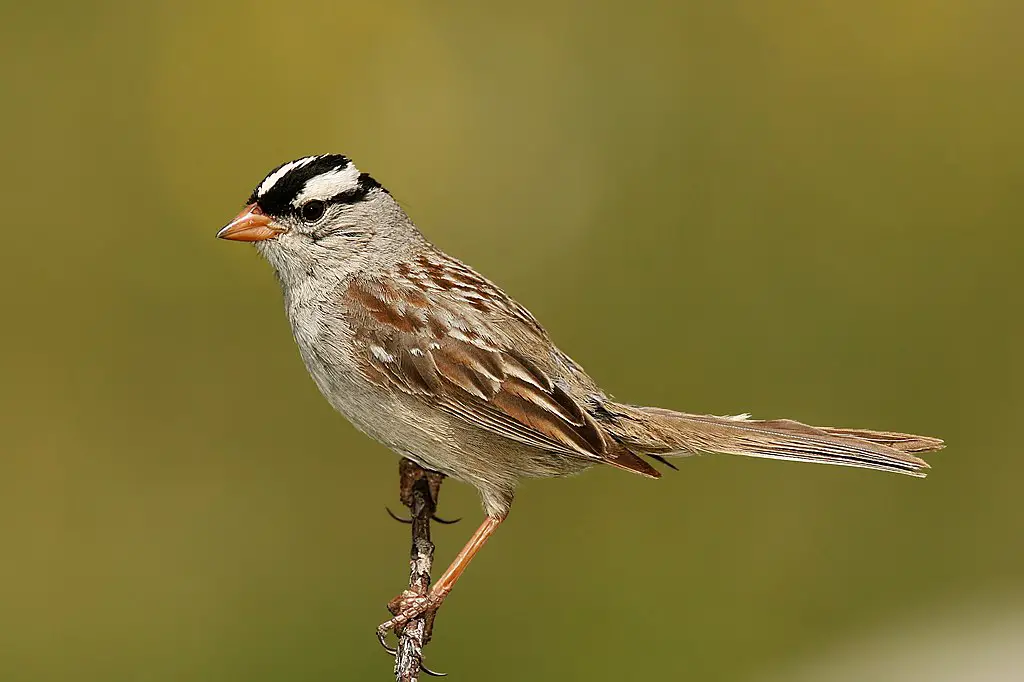
White-crowned Sparrows can be of the most commonly encountered winter sparrows in Texas.
White-crowned Sparrows love shrubby roadsides, backyards, agricultural fields, and brushy habitats.
They are often seen in groups and sing frequently. This is a semi-common species for backyard bird feeders, though they are most likely to feed from the ground.
Similar species include White-throated Sparrow.
White-throated Sparrow
- White throat patch
- Black and white head stripes with yellow near eyes
- Winter species in Texas (October – April)

White-throated Sparrows are winter birds throughout most of the state, and can be found during spring and fall migration in the Texas Panhandle.
This species likes similar habitats as White-crowned Sparrows; weedy fields, hedgerows, forest edges, backyards, and city parks. These sparrows will frequently come to bird feeders.
White-throated Sparrows can be distinguished from the more-common White-crowned Sparrow by distinctive yellow patches on the head and a white throat.
Song Sparrow
- Dark spot on the breast
- Dark “sub-malar” feathers just under the beak
- Winter species in Texas (October – April)

Song Sparrows are a common winter bird in parks and more natural areas.
These birds can occur in many habitats, from grasslands and marshes to woodlands and suburbs. These birds tend to stay low to the ground, preferring to hide in fallen tree limbs and vegetation.
Similar species include Lincoln’s Sparrow.
Savannah Sparrow
- Yellow just above the eyes, pale pink bill
- Almost always seen on the ground
- Winter species in Texas (October – April)

These birds are very common in open grasslands, wetlands, and agricultural fields. They are not typically visitors of bird feeders, but may occur in brushy backyards.
Savannah Sparrows can be dark with bold streaks along the body, or only lightly colored with subtle streaks.
The most helpful clue is always the faint yellow just above the eyes.
Vesper Sparrow
- White eyering
- White streak on side of the neck
- Winter species in Texas (October – April)
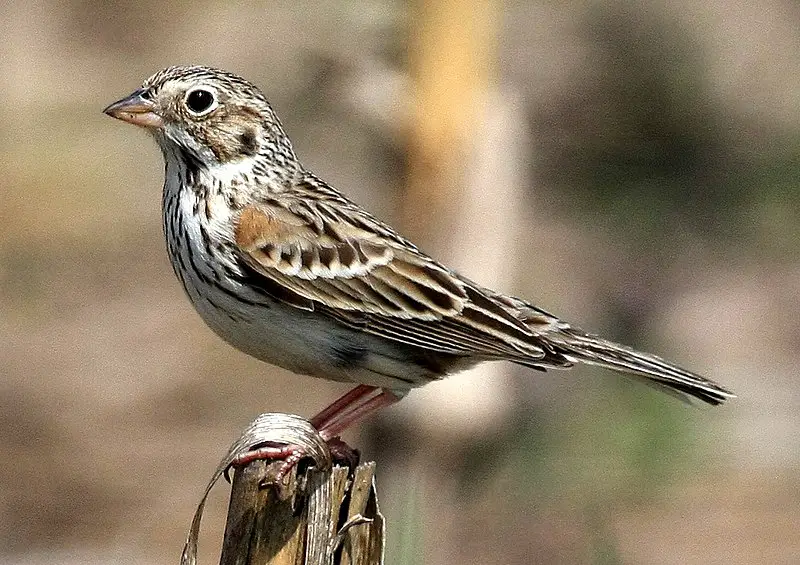
Vesper Sparrows are found in grasslands, agricultural fields, and roadsides. It’s not a bird you’d expect to see at a backyard feeder.
The two most helpful clues for identification are the eye ring, and the white neck streak. They’re not obvious in all individuals, but are easily visible probably 90% of the time.
Lincoln’s Sparrow
- Thin neat eyeline
- Yellow wash on face, breast, and flanks
- Winter species in Texas (October – April)
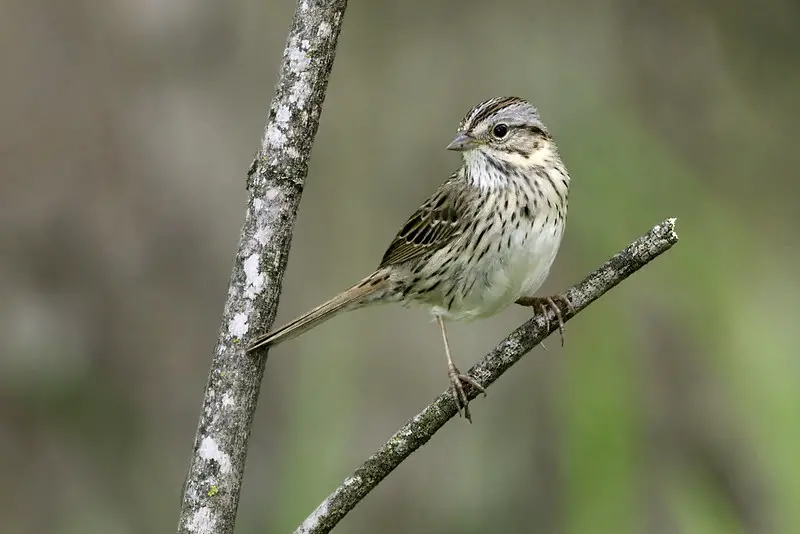
Photo credit: Kelly Colgan Azar
Lincoln’s Sparrows are most often found along wooded and shrubby edges, and along drainages and creeks. They may occasionally visit feeders, especially if shrubby vegetation is nearby.
The most helpful clue for identifying Lincoln’s Sparrow is the obvious eye line, and the light yellow color in the face, breast, and flanks.
Sometimes the yellow is bright and obvious, other times it may be subtle and difficult to see.
Lincoln’s Sparrows may be found in mixed groups of other sparrows. They’re most common during winter, but are migratory so fall and spring may bring them to less typical areas as they travel long distances.
Similar looking species is the Song Sparrow. Lincoln’s Sparrows lack the bold and dark “sub-malar” feathers (under the chin, outlining the throat).
Dark-eyed Junco
- Typically darker upper body and white belly, will flash white tail feathers in flight
- Mostly seen in groups
- Winter species in Texas (October – April)
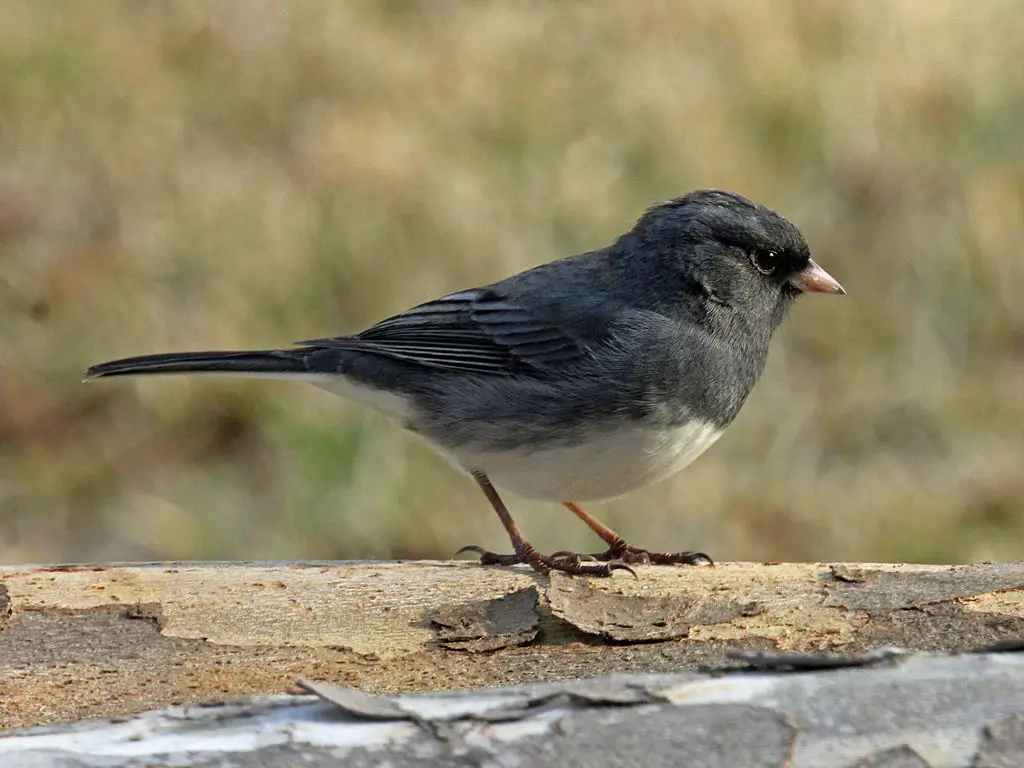
Juncos are winter birds throughout most of the state, and are especially common in north and northeast Texas.
Most Texans know the classic slate-gray color, but at least five color variations of this species exists.
Areas near west Texas mountains like Big Bend and the Guadalupe Mountains during winter are great places to see the different color variations of Juncos.
Dark-eyed Juncos can be found in forests, fields, roadsides, parks, and backyards. They typically stay in groups and will frequent feeders, especially for seeds on the ground.
Lark Sparrow
- Bold brown facial markings
- Open areas with scattered bushes, especially with bare patches of ground or rock
- Present year-round in most of Texas

Photo credit: Becky Matsubara
Lark Sparrows are one of the most bodly patterned sparrows in Texas, especially on their face.
They can be common in small groups near farmland, especially in overgrown grassy and shrubby areas near fields of short grasses or bare dirt.
Spotted Towhee
- Black on top, white spots on wings, reddish brown on sides, white belly.
- Winter, year-round
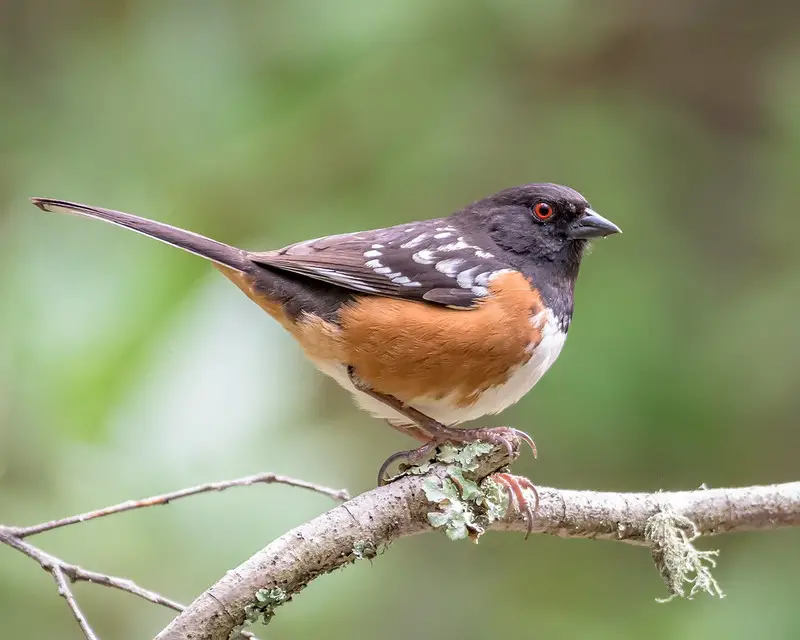
Photo credit: Becky Matsubara
Towhees like to stay down low in thick shrubs and bushes.
They like a mix of trees, shrubs, and open grassy areas. Along rural roadsides with shrubby fence lines can be an easy place to find Spotted Towhees.
Eastern Towhee
- Similar to Spotted Towhee, but lacks white on wings
- Only common in east Texas
- Winter species (October – April)
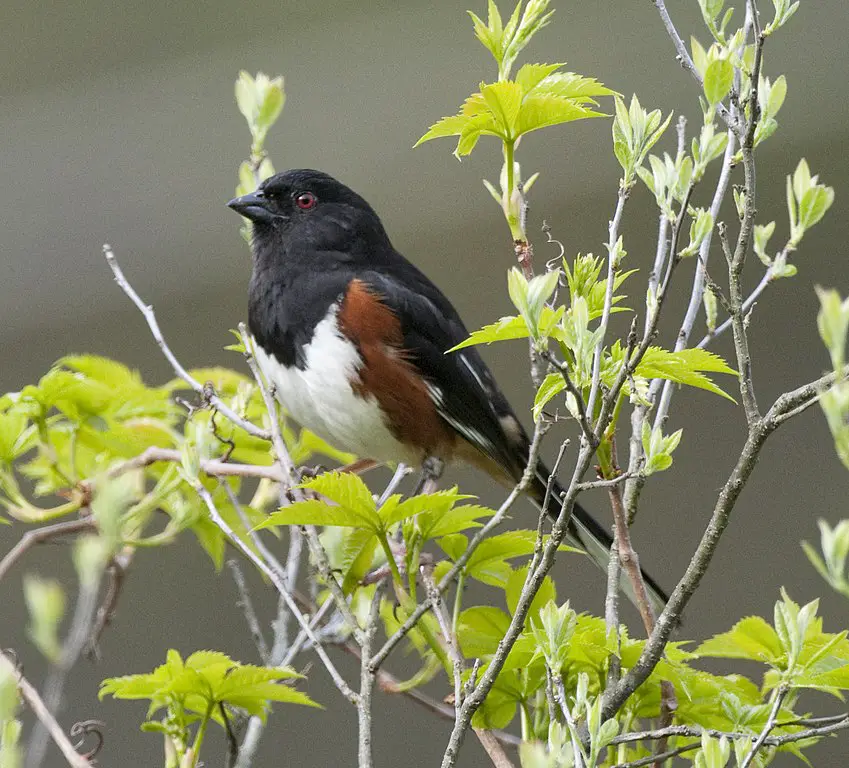
Eastern Towhees are winter residents in Texas, most common in east Texas (east of Dallas, north of Houston).
They prefer wooded areas with a shrubby understory to provide plenty of cover and protection.
Canyon Towhee
- Light streaks on the throat, rich red-brown color under the tail
- Found in the western half of Texas

Canyon Towhees seem to prefer open rocky areas with scatter shrubs to use for cover.
Because they’re mostly found in rural western and west-central Texas, it’s not a bird most Texans are familiar with.
Green-tailed Towhee
- Mostly a west Texas species
- Winter species in Texas (October – April)

Green-tailed Towhees like to stay low in thick shrubby vegetation with plenty of tall grasses mixed in.
In Texas they’re only common during winter in the far western region.
Good places to find them are along shrubby rocky drainages and creeks.
Grasshopper Sparrow
- Smooth yellow wash in the face, white eye ring
- Grassland-specific species
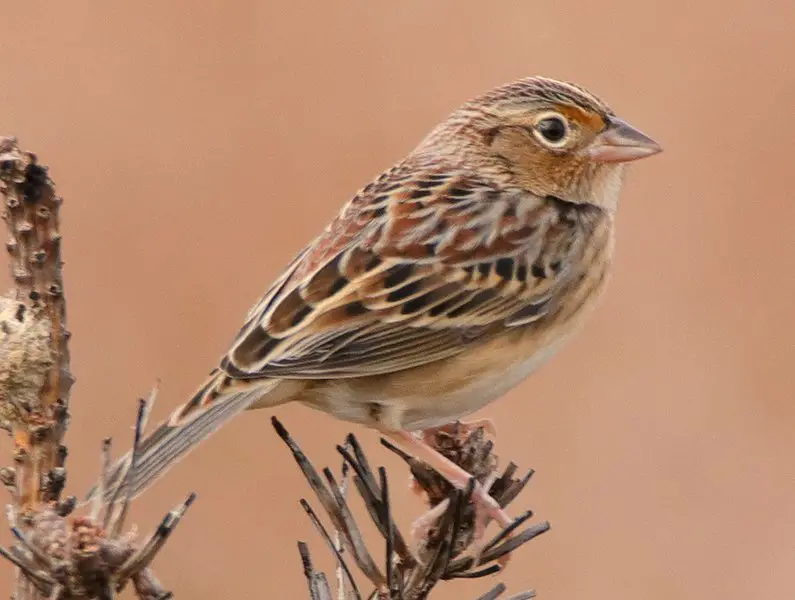
Grasshopper Sparrows are strictly grassland species. They get their name from their high, thin, buzzy, insect-like song.
They’re most common in central Texas, in the hill country and backland prairie regions.
To find these birds, the surrounding habitat needs to be at least 50% grass. The grasses typically need to be at least 12 inches high, with native grasses species being the most attractive (like Little Bluestem).
Swamp Sparrow
- Dark eye line, white-ish throat, faint dark spot on breast
- Found in vegetation in wetlands and near water
- Winter species in Texas (October – April)
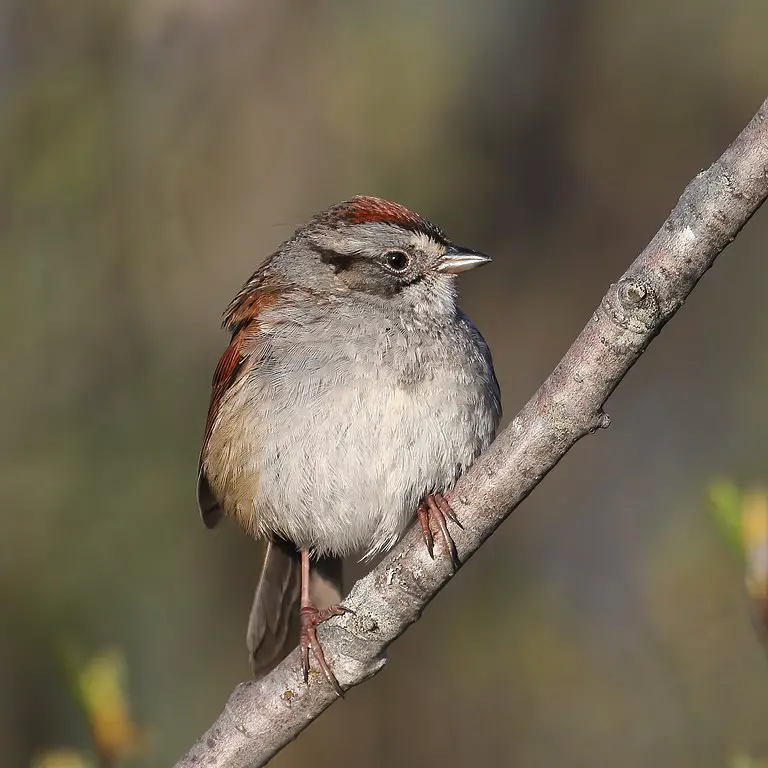
Swamp Sparrows are an appropriately named bird. They love swamps, marshes, and vegetation along water.
At first glance they resemble Lincoln’s Sparrows, and sometimes share similar habitat. But Swamp Sparrows have clean, unmarked breasts and flanks.
If you see a sparrow in some cattails near water, Swamp Sparrow is a likely candidate.
Fox Sparrow
- Dense thicket forest habitat
- Winter species in Texas (October – April)

Fox Sparrows are a unique looking Texas sparrow, with rich rufous-red colors all over the body (especially the breast and stomach).
They strongly prefer woodland habitat, especially if there’s water nearby, like along creeks and wooded drainages.
Lark Bunting
- Streaky with large beak, black at base of the beak
- Grasslands and road edges
- Winter species in Texas (October – April)
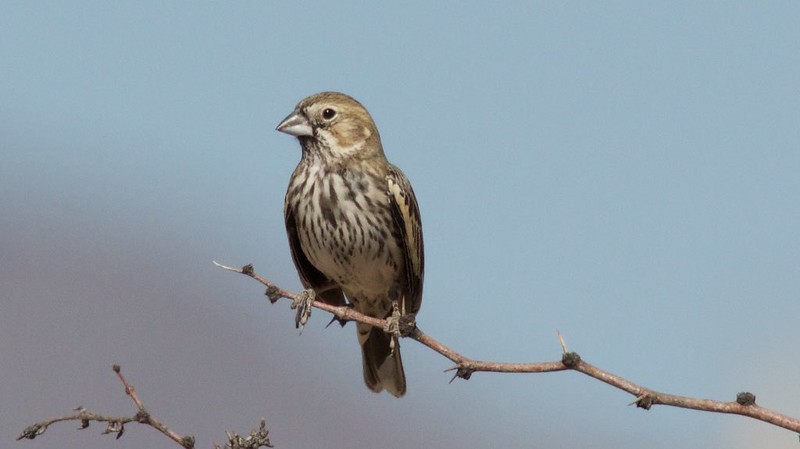
Confusingly, this bird isn’t actually a bunting, but is in the sparrow family.
Lark Buntings are typically found west Texas and the panhandle during winter months. Occasionally they can be found in central Texas too.
They tend to flock together and stay low to the ground, preferring mixes of grassy and shrubby areas.
Cassin’s Sparrow
- Very plain sparrow, best identified by song
- Known for their sky larking behavior
- Found in open grasslands and shrubby grasslands
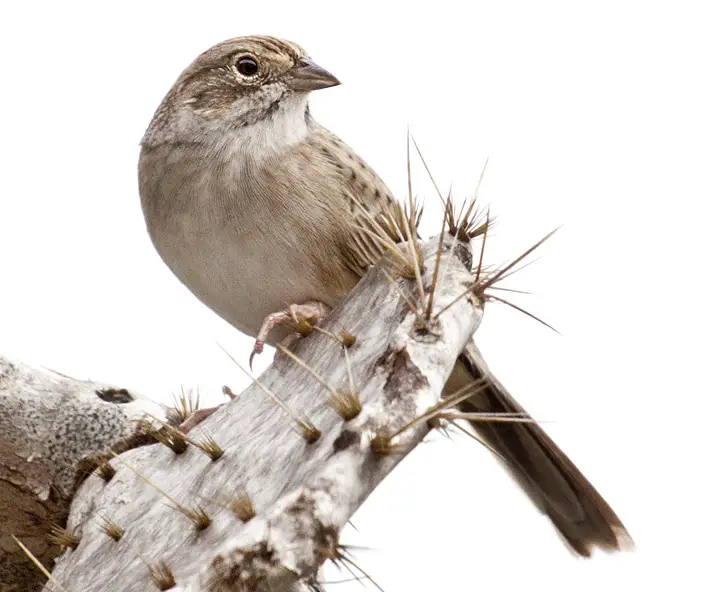
Cassin’s Sparrows are tricky to identify because they lack distinctive markings. They’re a very plain, brown bird. Their song however, a distinctive high trill, is easy to identify if you know what to listen for.
Cassin’s Sparrows have an interesting breeding behavior. Males will skylark, which means they sing while flying 20 feet straight up in the air, then slowly fluttering straight back down to a perch.
They’re rarely found near urban centers of any size, and strongly prefer high quality, undisturbed habitat where native grasses grow tall.
Clay-colored Sparrow
- Shrubland, thorn scrub, grassland, desert
- Winter bird in western and southern Texas, migration throughout most of the state
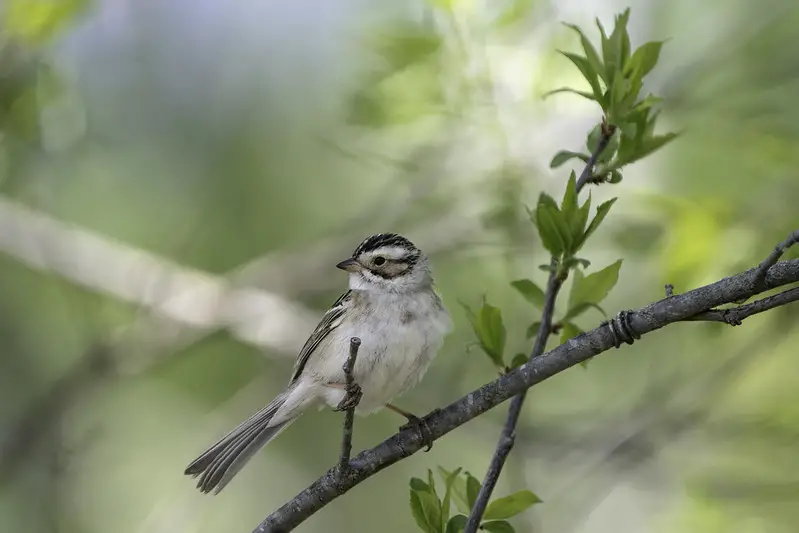
Photo credit: Lorie Shaull
Clay-colored Sparrows are a sign that migration is underway in Texas, as they’re typically seen in March and April (spring migration), then again in September and October (fall migration).
They look similar to Chipping Sparrows, with a dark eyeline and clean breast, but differ in the Clay-colored’s bronze cheek patch.
Harris’s Sparrow
- Agricultural fields, shrubs, hedgerows, backyards
- Winter throughout central and northern Texas
- Largest sparrow in North America
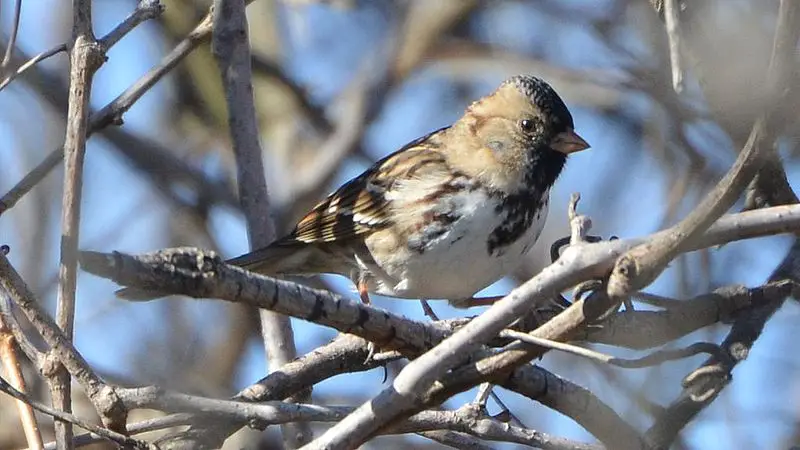
Harris’s Sparrows are the largest sparrow in North America. The winter in Texas, but fly north for spring and summer.
They enjoy woodland edges with a shrubby midstory and somewhat open ground. They can be especially common in wooded areas of north-central Texas, but can be found as found south as the San Antonio area.
American Tree Sparrow
- Open forest, hedgerows, marshes, weedy fields, backyards
- Winter in northern Texas

American Tree Sparrows aren’t common in Texas, and birders usually have to travel to the northern panhandle during winter to find them, like around Amarillo.
The look similar to the common Chipping Sparrow, except the eyeline is brown instead of black, and American Tree Sparrows have a small dark dot on the breast.
LeConte’s Sparrow
- Damp and coastal grasslands
- Winter bird in central and east Texas
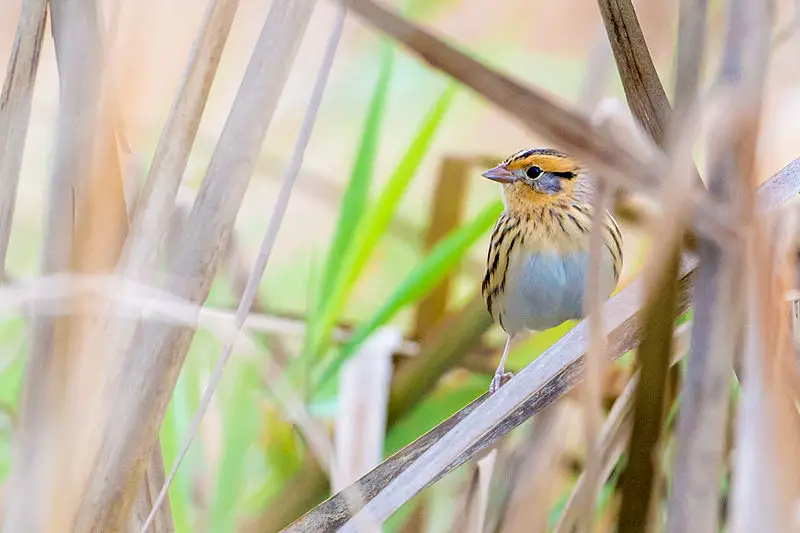
LeConte’s Sparrows are typically only found in high quality, healthy grasslands with expansive areas of tall grass. They especially prefer somewhat wet grasslands, like around the edges of marshes or lakes.
Many birder consider this species a great grassland prize, since they can be secretive and difficult to find or get a good look at.
The bright yellow in the face and bold black streaks really help identify this species in the field.
Henslow’s Sparrow
- Damp grasslands, pine savannas
- Winter in eastern Texas

Henslow’s Sparrow is an east Texas specialty, found nowhere else in the state.
It looks similar to the LeConte’s Sparrow, and can be found in similar habitat. The yellow on Henslow’s Sparrows is more muted, while the black body and facial streaking is softer with more rounded edges.
Bachman’s Sparrow
- Grassy pine woodland habitat
- Year-round in far-eastern Texas
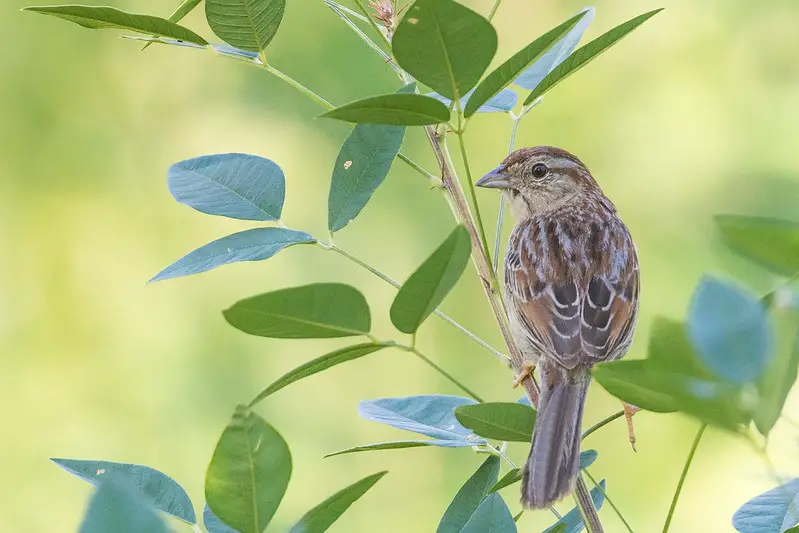
Bachman’s Sparrow is an east Texas specialty, found nowhere else in the state.
It’s simple mix of brown tones and lack of any bold black streaking make it visually different than other east Texas sparrows.
Nelson’s Sparrow
- Wetlands and marshes
- Winter along coastlines north of Corpus Christi, migration throughout eastern Texas

This migratory sparrow winters on the Texas coast from Galveston down through Corpus Christi.
It differs from the similar looking LeConte’s Sparrow in that Nelson’s Sparrow lack the bold, dark streak in the face and flanks.
Nelson’s Sparrow also stick to coastal marshes, while LeConte’s Sparrows can be found within inland grasslands.
Seaside Sparrow
- Coastal saltmarshes
- Winter in along coastlines of southern Texas, year-round north of Corpus Christi

Seaside Sparrows are only found near the coast, and prefer coastal marshes with tall grasses and reeds.
They have a unique gray color to the body and head, with a dash of yellow in front of the eyes.
This sparrow is easiest to find during April and May when the males are perched up high in the reeds while singing.
Black-throated Sparrow
- Bold white head stripes, obvious black throat
- Found in dry rocky areas with tall grasses and shrubs
- Central, south, and west Texas
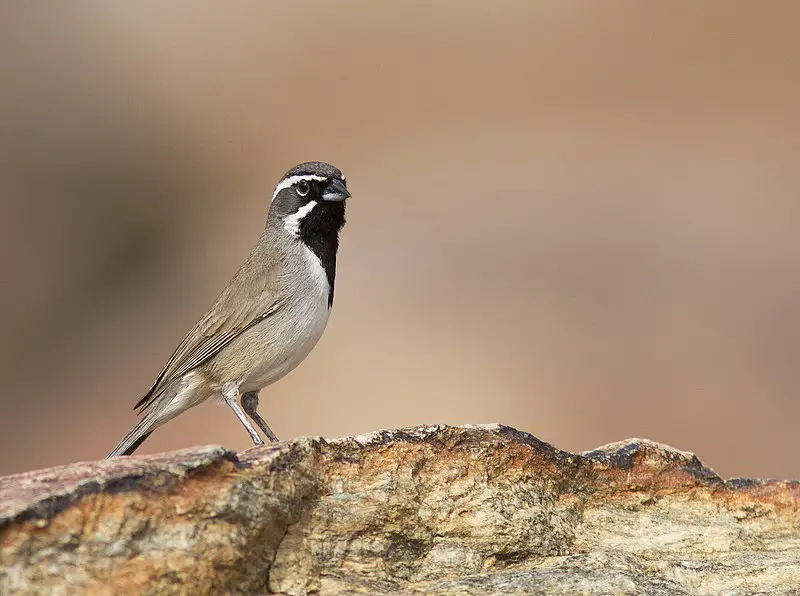
Black-throated Sparrows are one of the most strikingly marked sparrow in Texas.
They prefer arid and semi-arid regions, and are usually associated with desert or near-desert habitat.
They can be common within areas in central Texas (the further west the better), central west Texas (Abilene, Midland), and the west Texas desert.
Rufous-crowned Sparrow
- Dry, open grassland and shrubland
- Semi-common in the Texas Hill Country, and west Texas

Rufous-crowned sparrows tend to like semi-rocky areas, especially on sloping hillsides.
This species can be common in areas of the Texas Hill Country, especially where rocky hillsides are covered in grass rather than trees.
Black-chinned Sparrow
- Desert species
- Likes shrubby, rocky hillsides
- Mostly a winter bird in far west Texas
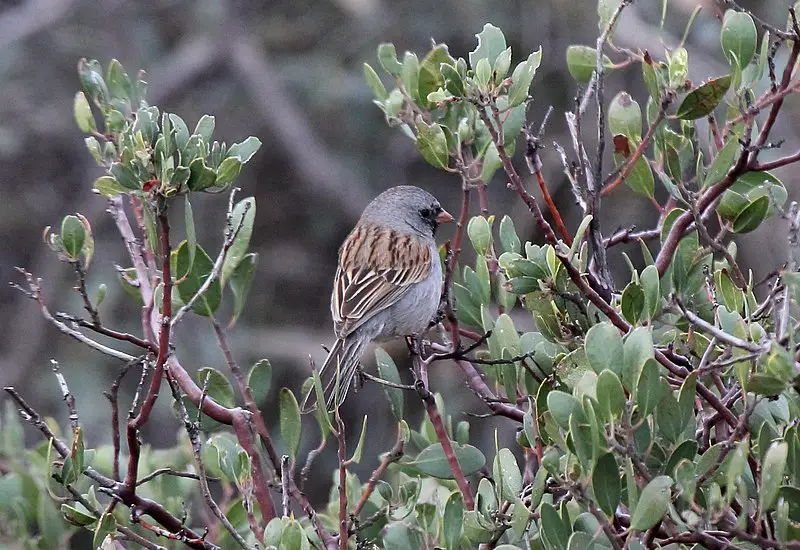
Black-chinned Sparrows can be found in the west Texas desert, especially in areas with rocky sloping hillsides.
Canyons and mountain sides in Big Bend and Guadalupe National Parks can be decent areas to find these birds.
Baird’s Sparrow
- Desert grasslands
- Winter in far-west Texas
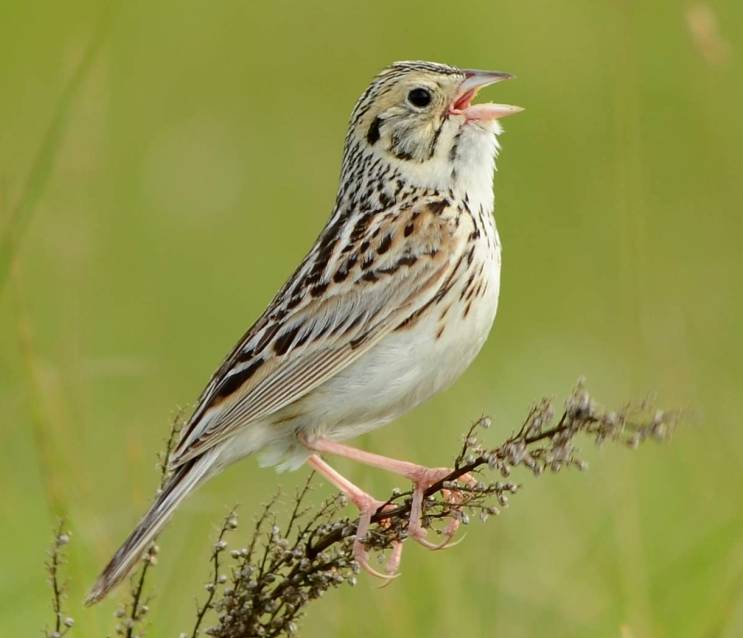
Baird’s Sparrows can be very difficult to find in Texas.
They’re prefer open tall grasslands in the west Texas desert during winter months. They have a secretive nature and tend to stay hidden down low in the grass.
Brewer’s Sparrow
- Desert scrubland
- Migration throughout west Texas, winter in west Texas deserts
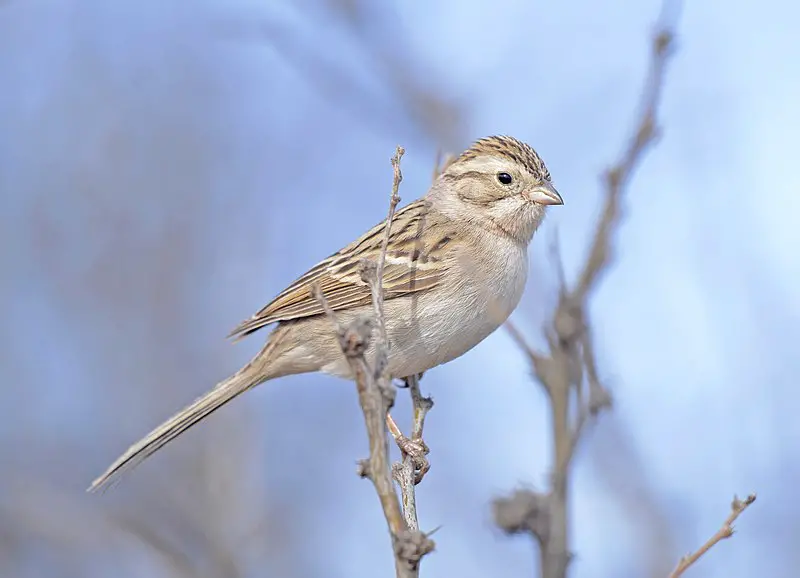
Brewer’s Sparrow are typically found in west Texas during winter months.
They can be quite common in areas with good habitat, especially in shrubby areas near water.
Sagebrush Sparrow
- Gray head with white eyering
- Winter in west Texas deserts
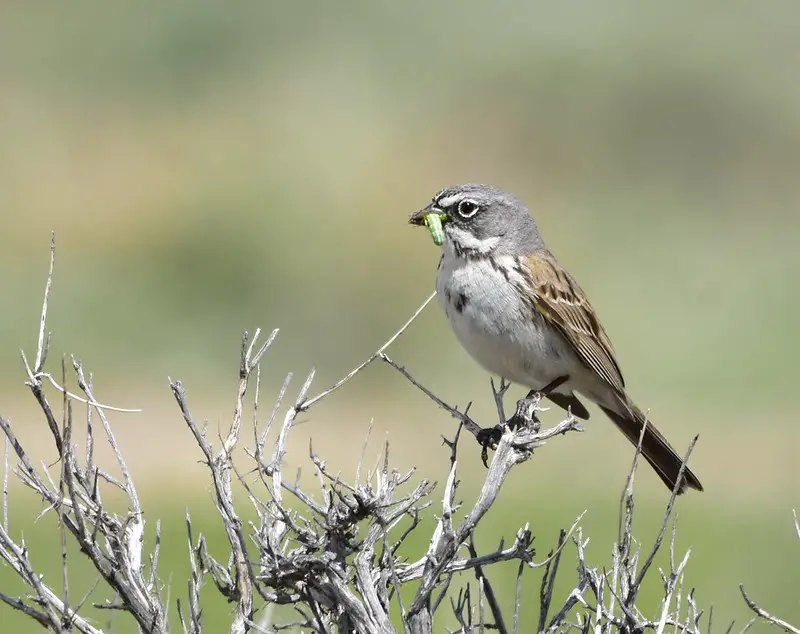
This sparrow is typically only found in west Texas deserts during winter months.
They prefer shrubby areas with vegetation to hide in.
Olive Sparrow
- Dense thorn scrub
- Year-round in southern Texas
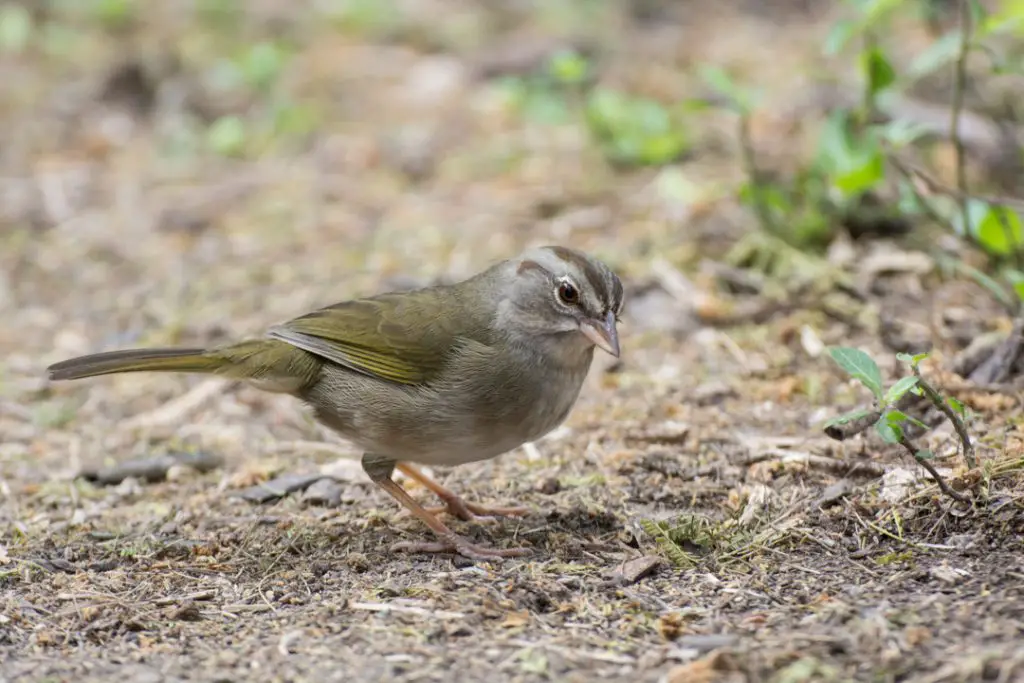
Olive Sparrows can be found in the southern portion of Texas, south of San Antonio.
They’re most commonly found in the Rio Grande Valley. State parks like Bentsen Rio Grande and Estero Llano Grande can be good spots to see them.
Botteri’s Sparrow
- Grassland species
- Year-round in south Texas Rio Grande Valley
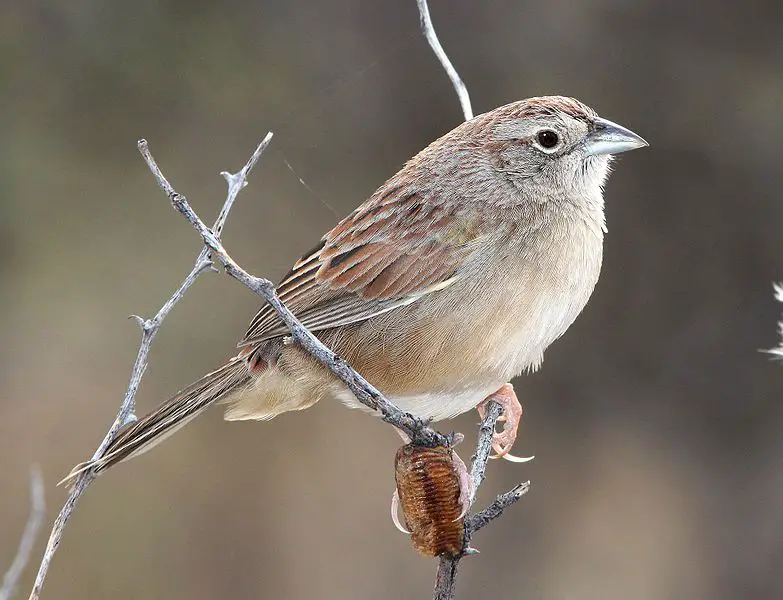
This plain looking sparrow can be found in the Rio Grande Valley in far south Texas.
Search for them in open areas of tall grass. Areas in and around Laguna Atascosa N.W.R. may be a good place to find them, especially in the spring when they’re singing and active.
Golden-crowned Sparrow
- Brush, thickets, occasional backyards
- Rare in Texas, not found every year

Typically a west coast species, this is a rare bird in Texas. It tends to show up once every 2 or 3 years in the state, usually in far west Texas or in the panhandle during winter months.
Yellow-eyed Junco
- Very rare in Texas
- Only a handful of reports from far west Texas
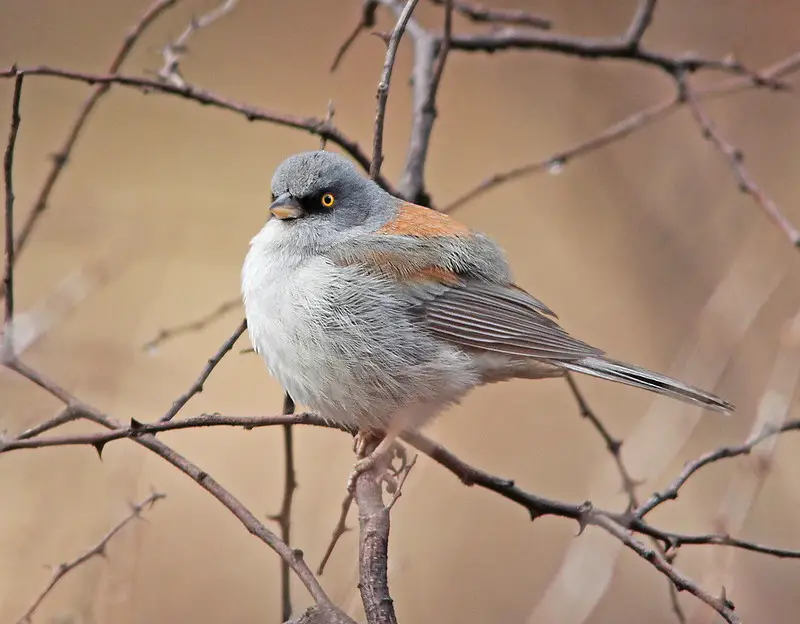
Typically only found in Arizona, this rare Texas sparrow may show up once every few years in far west Texas, like in El Paso.
It looks similar to some Dark-eyed Juncos (the more western color morphs), but differs in their bright yellow eyes.

